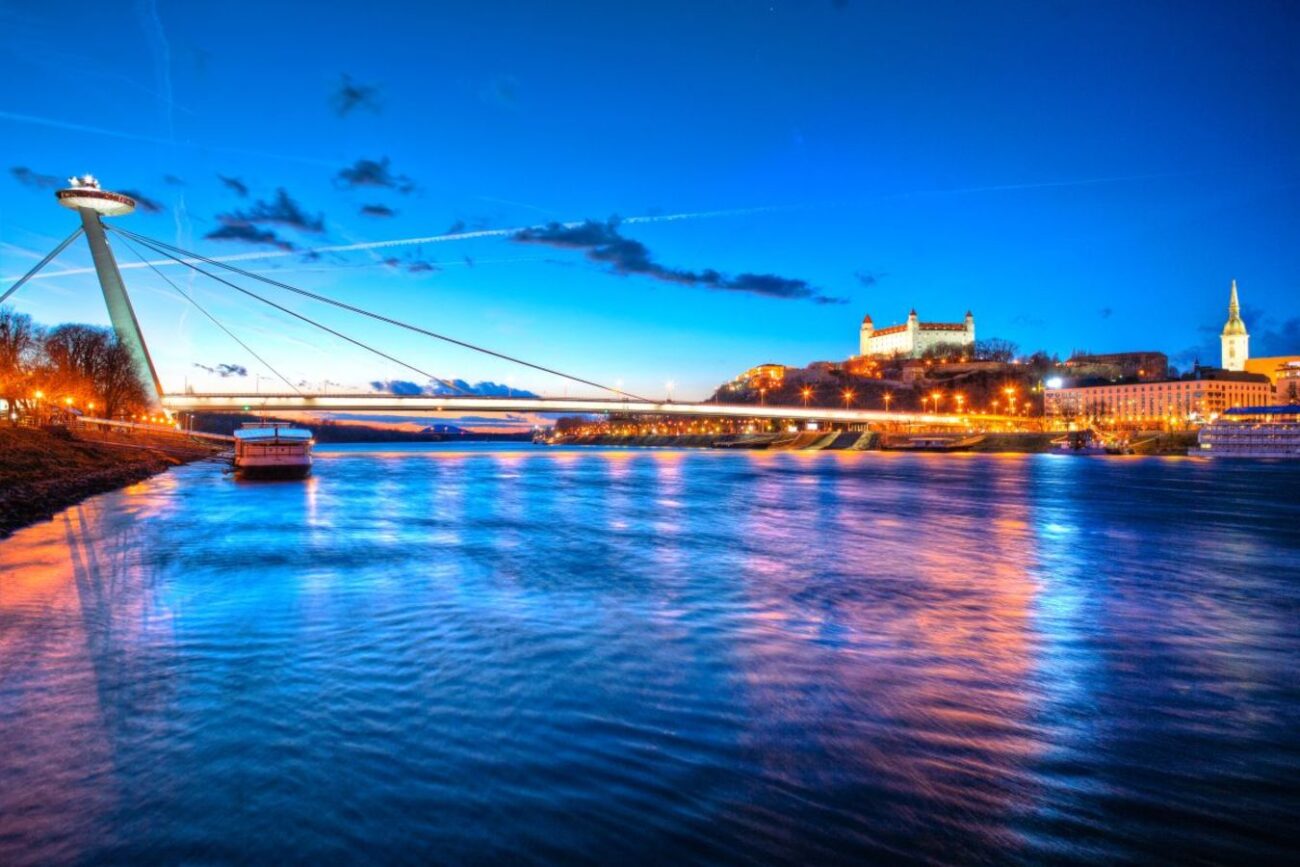The Many Facets of Slovakia
Smaller than West Virginia, Slovakia surprises first-time

visitors with the diversity of experiences it offers. Stroll through historic cities, explore its castles, head out to the countryside for wine tastings and to the mountains to hike, bike or ski or relax at a thermal spas.
Americans often marvel at the ease of getting around in this compact nation, where distances are short and transportation is efficient. A member of the EU and part of the Schengen area, Slovakia uses the Euro and English is widely spoken.
Bratislava, the cultural heart of Slovakia, is often the first stop. The only national capital to border three countries (Austria, Czech Republic and Hungary), it sits along the Danube River, just 45 minutes from the Vienna Airport.
The city has long been an important trading post and cultural center, as its Roman ruins attest. From 1563 to 1830, the gothic St. Martin’s Cathedral in Old Town was where the far-reaching Kingdom of Hungary crowned its kings and queens. A huge guided replica of the crown tops the Cathedral, and every July, during Bratislava Coronation Days, actors in period clothing reenact the ceremonies and the Main Square comes alive with music, fencing and falconry performances.
Bratislava Castle, the former royal residence, is worth a trip if just for its lovely panoramic views of the city, the Danube and the surrounding countryside. Other great vantage points include UFO Restaurant and observation tower, which sits on the SNP bridge, and Dunajský Pivovar, a boat, or “botel”, moored on the Danube River with a hotel, restaurant and craft beer brewery.
With six wine regions, you’ll never be far from one of its many vineyards, producing everything from light white, rose and red to the unique sweet wines from the Tokaj region, where you can sip the same sweet natural wine as Napoleon did.
The award-winning Tokaj wine region features medieval wine cellars carved into volcanic rock and popular villages like Malá Tŕňa, Veľká Tŕňa and Viniky, known for gastronomy as well as quality wines.
Most Slovakian wines are still little known outside the country. Yet all six of its regions, organized into easy-to-follow wine-tasting trails, produce wines worthy of note.
One of the most visited lies just outside Bratislava; the Wine Route of Malé Karpaty winds through picturesque villages in the Little Carpathian Mountains, and harvest festivals are celebrated with parades, artisan markets, and of course, wine. And in the Tirnavia region, you can witness medieval wine pressing and pageants.
Nature lovers find paradise in nine national parks and over 9,000 miles of trails that lead to to stunning lakes, waterfalls and panoramic vistas and winter visitors can take to the ski slopes.
More than 100 glacier-carved valleys and lakes make the High and Low Tatras Mountains a good choice for everyone from indulgent escapists to serious climbers and birders. The region is popular for its guided treks to remote chalets and hut-to-hut hiking as well as five-star hotels like the Grand Hotel Kempinski and Lomnica Hotel.
Biking is a passion throughout the country; national and international cycling routes lead through forests, meadows, picturesque countryside and villages and include EuroVelo trans-Europe routes and mountain-biking trails. For adrenaline-pumping thrills, the adventurous can hire a guide to help them navigate the ladders, chains and steel ropes of Via Ferrata, or go river rafting down the Belá River.
Pieniny National Park is known for its wooden raft trips and Poloniny National Park in the northeast protects a towering beech forest and Europe’s last remaining wild bison.
Thermal spas and healing waters have drawn wellness-seekers since pre-historic times. Slovakia is packed with 1,782 mineral springs; 82 of them are designated as natural healing waters.
Less than an hour from the capital is the renowned spa town, Piešťany. It is known for its pretty Art Nouveau style hotels and cultural offerings along with its medicinal geo-thermal water and sulphuric mud treatments said to help rheumatic and neurological disorders.
Medicinal water and mud treatments are also on tap at Trenianske Teplice, a spa town with a Moorish style hammam and cultural events including a summer chamber music festival and Art Film, a high-profile event attended by international stars who leave their palm prints in front of the modern Flora Hotel.
UNESCO World Heritage Sites abound, including eight that recognize the intricate beauty of the country’s wooden churches, that have held together for centuries without a single nail.
Banská Štiavnica earned UNESCO status as an innovative centre of Hungarian mining and European gold and silver mining. Today, it is also known for the fine palace architecture and delightful cobbled streets and squares that its mines funded.
Košice, the nation’s second largest city, was named Europe’s 2013 City of Culture and a UNESCO Creative City. Experience its artistic spirit in the White Night International Art Festival and UNESCO Art & Fest, a celebration of media art, technology and digital culture.
Best of all, Slovakia’s diverse landscapes, cities and villages means there’s always another delightful experience awaiting your discovery. Slovakia – what a surprise! www.slovakia.travel/en




